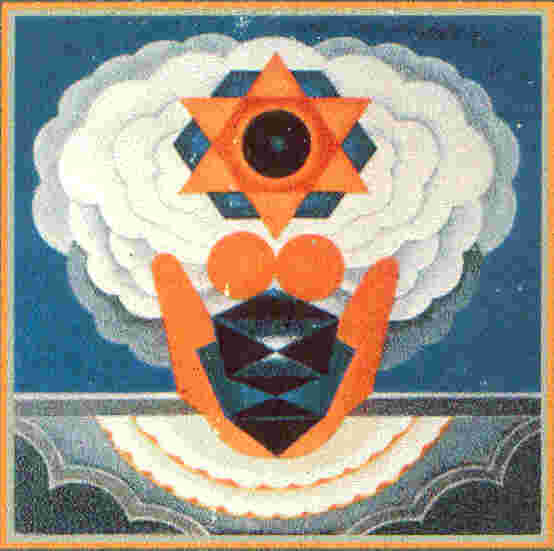|

|

|
|
Kashmiri Pandits' Association, Mumbai, India |

|
| | Home | June-July 2003 Issue | |
|
Acedemics
… Tribhuwan N. Bhan Revolution in Mathematics
Before the middle of the 19th Century, mathematics were exploring new ideas. They made very little effort at organising the subject-matter or unifying the various branches of Mathematics. Euclid's 'Elements' however represented a major synthesis and Descartes' 'Analytical Geometry' was indeed a great unification of Algebra and Geometry. That is all that can be said about the effort at the 'unification' before the middle of the 19th Century. Then came the middle of the 19th Century. It heralded a reaction, a change, a reformation and a reorganisation in Mathematics. All this marked a beginning of a new epoch for Mathematics. By this time it had become so vast and complicated that the link between its various parts was beginning to get snapped, and Mathematics was breaking up into unrelated compartments; which was about to put mathematics into trouble. Mathematicians realised that to save the situation, some reformation coupled with an examination of the fundamental concepts was the need of the day. It was at this time that George Cantor (1845-1918) came on the scene. Cantor has truly been called the Father of Modern Mathematics. To think that someone else deserves this title is inconceivable. He said, "The essence of Mathematics is its freedom." This slogan changed the very approach to Mathematics. Cantor introduced the 'Theory of Sets'. This mathematical theory provided the answer to the much needed unification of the vast subject of Mathematics. Cantor's 'Theory of Sets' created a stir in the circles of Mathematics; and all other advances of that time fade into insignificance before this revolutionary concept. In 1847, when Cantor first published his paper on the 'Theory of Sets', a violent storm of protest was led by Kroncker and Poincare. As they were Mathematicians of no mean repute, their criticism discouraged many mathematicians from even trying to understand the novel concepts of Cantor. He, however, got enough support from Dedekind, Mittag-Leffler and others. Later on, in early 20th Century, academic honors were showered on Cantor by many countries. This late recognition could not stem the nervous breakdown which Cantor first had in 1884 as a result of the barrage of criticism to which he was subjected. This trouble recurred from time to time to the end of his life. Cantor died in 1918 in a psychiatric clinic at Halle. The 'Theory of Sets' went along two clearly different lines of approaches. One was the Mathematical Theory of Sets, and the other, the study of Mathematical System (Mathematical logic). The point set topology was evolved from the first approach, because of its concept of sets of points on a line, in a plane or in other dimensions of Euclidean spaces. The latter approach mixed with logic, since little regard was given to the nature of sets. Though the development of Set Theory bifurcated in two distinct ways, both were logically well mixed in Cantor's concept of Sets. By using very simple methods, Cantor arrived at some amazing results. Due to the results he arrived at, it was possible for Mathematicians to treat the concept of infinity along absolute logical lines. Not only Cantor, but logicians like Boole, De-Morgan and Peone, constructed Mathematical systems which are responsible for the present edifice of the Set Theory. No doubt, the Set Theory holds the pride of place in the world of Modern Mathematics, but it is 'Group Theory' which goes to the very foundation of what happens when a particular mathematical operation is applied to various elements or when different operations, following a sequence, are applied to just one element of a set. It is the Group Theory which has been used and applied in sophisticated electronic systems. The Theory of Groups was introduced by a fiery French teenager Evariste Galois. He wrote most of his theory in an unintelligible writing covering about 30 pages in a single night, little did he know that the next day he would be killed in a foolish duel over a girl of ill-fame whom he did not even know. This tragic prodigy repeatedly proved unsuccessful at the examinations, fought with his parents and elders, disobeyed his teachers, was rejected by his family, was considered an outcast by society and was imprisoned for threatening the King's life. At the time of his death, he was hardly twenty years old, yet he is considered to be one of the most creative and original mathematicians of all times. What made Evariste Galois write out his theory that particular night? Being a genius, could he foresee how close his death was. Could he have heard the knock of death at his door and therefore resolved to complete his allotted work hurriedly (the fact is obvious from the unintelligible writing of his manuscript) before his end? Or was there some unseen power from above that incited him to fulfill his destined duty towards the world of Mathematics, just a few hours before his death and thus make a mark in this field. Whatever be the answers to these questions is immaterial. Normal death due to sickness or old age would not have been a fitting finale to the controversial life of this tragic genius. It would have been an anticlimax. Every aspect of Galois' life was an enigma and his death provides a sort of poetic justice to the life he led. Nevertheless no one can deny the fact, had Evariste Galois lived for just ten years more, Mathematics would have advanced manifold. With the introduction of logic in Mathematics, logical senses grew more refined and subtle. People in general and mathematicians in particular did not believe or trust anything which was not backed by proof. About Euclid, people would say, "Euclid is Truth and Truth is Euclid". Educated people would swear by Euclid and not by God. But even Euclid was subjected to a thorough, critical and logical analysis. Euclid had constructed a magnificent edifice by compiling the entire available geometric data and putting these in the form of his monumental work 'Elements', which is the basis of traditional Geometry. When his work was put to a logical test, fissures appeared in his otherwise impressive edifice. Logicians were shocked to find that Euclid had completely omitted the concept of a straight line with infinite length. He only used line segments. He also omitted the idea of 'betweenness' or 'lying between two points', from his entire work. Anything that he found difficult to prove, he and his followers took for granted as self-evident truths. His method of using axioms to derive proofs was not without fault. Many of Euclid's arguments are based on the theorem that a point D on a line AB lies between points A and B. The familiar proof that a triangle, in which AB=BC, then /A=/C, needs bisection /B, this bisector intersects AC at D, but to complete the proof, one needs the fact that D is between A and C. To know this, one must have a pre-knowledge of 'betweenness' and must know the condition under which a point will be between the other two points. This, however, was not done by Euclid. To make these points and many other doubts clear, non-Euclidean geometries were created by Lobachevasky of Russia, Janos Bolyai of Hungary and Bernhard Riemann of Germany. Nevertheless, the first person to conceive the idea of non-Euclidean Geometry was Guass. He believed that new kinds of Geometry could be developed from an unusual new axioms, that through a point that does not lie on a given line, more than one line can be drawn parallel to that line. Such an idea was contradictory to common sense and Euclid, who believed that through a point that is not in a line, 'one and only one line' can be drawn parallel to that line. The three men whose names are mentioned earlier, carried out a revolution in Geometry which was foreseen by Guass. Riemann, Guass's distinguished pupil, created a strange Geometry in 1854, by saying that 'lines cannot be parallel' - i.e. they must meet at both ends like meridians on the Earth. Using this concept, he created perfectly consistent Geometry. It was this concept which became the mathematical language for describing the curved space of 'relativity'. Einstein used to some extent, this concept of Riemann as a mathematical tool for derivation of the famous equation E=MC2. It is this equation which shook the world by demonstrating the immense energy of the atom. For over one and a half centuries up to 1950, mathematicians and educationists had been trying to introduce drastic revisions in the instruction of Mathematics, but its teaching had not changed much. It was in the 1950's with the dawn of the satellite age that people realised that the world rests on Science, and Mathematics forms the backbone of all sciences. New programmes were introduced which lay stress on fundamental concepts, structure and logic - not just 'how' to tackle a mathematical problem, but 'why' to approach a problem in a particular manner. Some decades ago, the unification of Mathematics and logic appeared the most remote mathematical discipline. Suddenly it has turned out to be the most practical and useful, and the knowledge of which is most essential for using computers, and understanding the fundamental concepts underlying Modern Mathematics. Lately Modern Mathematics has become a subject of controversy and its utility questionable. All this is due to the propaganda carried out against it by the very people (not all of them) who are supposed to work for the advancement of this discipline. They are the people all over the world whose duty is to give instructions in this subject to the new generation. They are either not willing to learn the new concepts or the fear of the unknown is making them carry out a sabotage of 'Modern Mathematics'. The success of the new programmes will depend on the sincere effort and hard labour, mathematics teachers all over the world will put in to master the new concepts and then willing to part with their knowledge to their pupils. Of course, the co-operation of the parents of the students learning 'Modern Mathematics' will go a long way in contributing towards the successful implementation of the new syllabi. |
|
|
JOIN US |
|
|


 Newton's
monumental work 'Calculus' opened new avenues for mathematics in 1966.
Though mathematicians remained busy exploring new fields of mathematics,
no one took pains, or perhaps they had no time to organise this
fast-expanding intellectual discipline. Due to the expansion in the
content of Mathematics, the variety of problems that it could deal with,
also expanded. This variety made large-scale unification of its branches
rather difficult to attain.
Newton's
monumental work 'Calculus' opened new avenues for mathematics in 1966.
Though mathematicians remained busy exploring new fields of mathematics,
no one took pains, or perhaps they had no time to organise this
fast-expanding intellectual discipline. Due to the expansion in the
content of Mathematics, the variety of problems that it could deal with,
also expanded. This variety made large-scale unification of its branches
rather difficult to attain.

